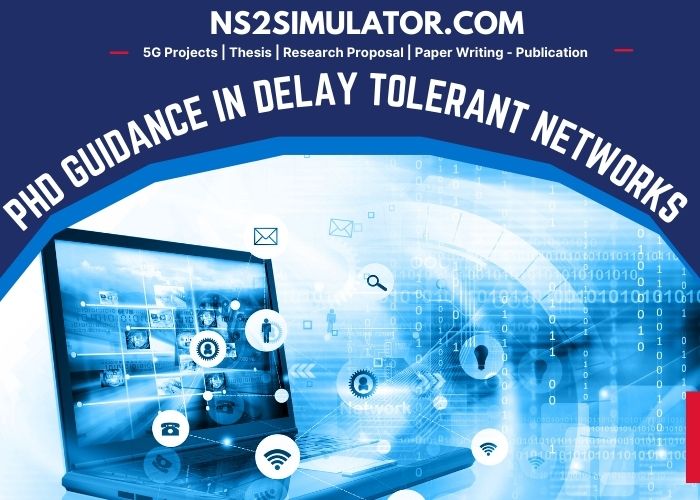Delay Tolerant Networking (DTN) is a network utilized to send and receive data using different protocols. It has the high potential to set up the simulation settings for infinite IoT, cloud, edge, and fog applications. Generally, it allows interoperation in the inter-device distance which is from the very short-range to the very long-range communication. Our PhD guidance in delay tolerant networks service is focused on the architectures, deployments, and recent advantages in DTN.
This page deals with the important functions and innovative research topics in DTN. Let us first start with the dynamic uses of DTN.
What is the use of DTN?
DTN helps to find the technical problems in heterogeneous networks and this process leads to the deficit in the flow of network connectivity and it is an approach to the network architecture. Now, let us discuss the notable working principles of DTN.
What is the use of DTN delay tolerant networks?
DTN helps to store and forward the message switches by covering a different layer protocol and that is called bundle layer. The bundle in DTN is known as the middle layer of the application and transport layer. It consists of bundle header, control information, and the application data unit which provide services such as,
- Custody Transfer Announcement
- Priority
- Forwarding Bundle Announcement
- Authentication
This page paid more attention to the recent research ideas in the DTN field. So, the PhD research scholars who are attentive in the DTN field can make use of this spot to know and discuss more important updates about DTN. Now, let us have a glance over the novel research topics in DTN.
PhD Topics in Delay Tolerant Network
- Internet of Things Applications over DTN
- DTN Data Management and Analytics
- DTN Architectures, Protocols, and Algorithms
- Testbeds, Prototypes, and Case Studies of DTN
- Network Security and Privacy of DTN
Above we discussed the novel research topics in DTN. Next, our PhD guidance in delay tolerant networks steps out with some problems that PhD followers facing in their recent research.
What are all the challenges in DTN?
- Opportunistic Link Availability
- Extended Period for Network Partitioning
- Packets and Nodes Pre-Scheduling
- End to End Reliability (Due to High Per Links Error Rates)
- Resolve Routing Issue for Frequently Disconnected
- Application Structure and Security Mechanisms
- Large Delay for Transmission Resulting from Physical Link Properties
So far, we have addressed some major and upcoming research challenges in DTN. Even though you are new to this field, the above-given research ideas provide useful information for your PhD career. Thus, our research experts in DTN provide the appropriate results for any kind of research topic in DTN. Now, let us discuss in what way we compute delay in DTN.
How to compute routing delay in DTN?
- Propagation Time
- The definite time used to transmit the message from the source to the destination over the wireless channel is called propagation time.
- Send Time
- Complete-time required to prepare the packet at the application layer and send it to the network layer is called send time. The send time includes delays introduced by the operating system.
- Transmission and Reception Time
- Certain time is used for transmitting or receiving a message at the physical layer. It includes the delay time and it depends upon the size of the packet and the rate of the wireless channel.
- Access Time
- While the channel access process in MAC layer delay is introduced. According to the application-specific protocol it is highly variable and one of the main components in synchronization.
Here, we have enlisted some delay factors with the value and the nature of that delay factor.
- Byte Alignment
- Value – 0-400ms
- Nature – Deterministic and it can be calculated
- Encoding / Decoding
- Value – 100-200ms
- Nature – Deterministic and depends upon radio chipset
- Interrupt Handling
- Value – <5ms (in most cases)
- Nature – Depends on interrupts and non-deterministic
- Propagation
- Value – <1ms (up to 300 meters)
- Nature – Depends on distance and non-deterministic
- Transmission / Reception
- Value – 10-20 ms
- Nature – Depends on packet size and non-deterministic
- Access
- Value – 10-500 ms
- Nature – Depends on channel contention and non-deterministic
- Send / Receive
- Value – 0-100 ms
- Nature – Depends on processor capacity and non-deterministic
Our PhD guidance in delay tolerant networks service aim is to distribute all novel research ideas for your research. You can join hands with our research experts at any time for your research work in DTN. We help you in any stage of your PhD research in DTN. So, contact us to obtain the best PhD research work.

